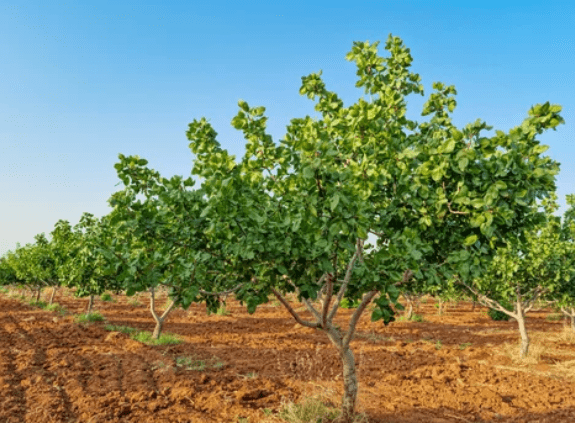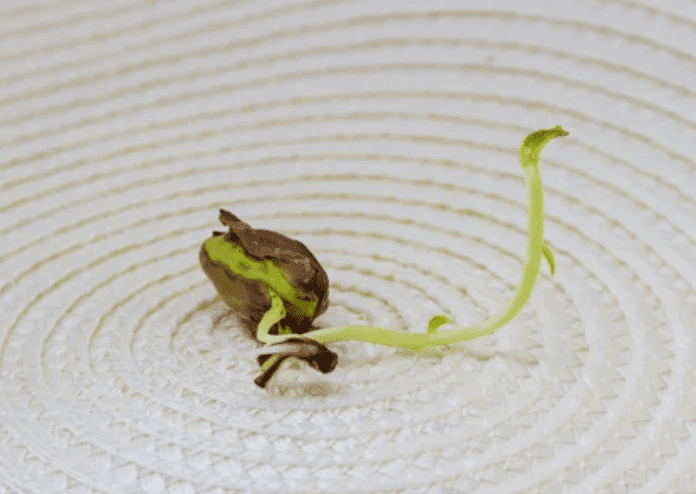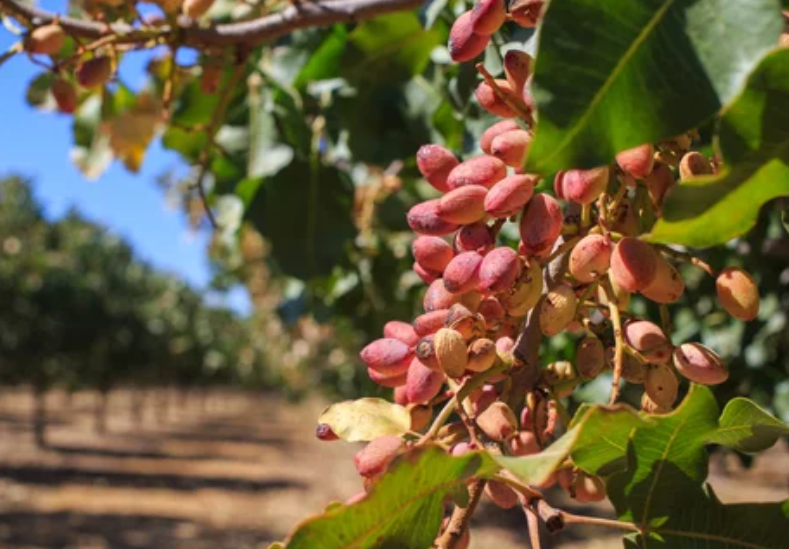Growing pistachio trees offers several benefits. They are a high-value crop with increasing demand, providing a profitable investment. Additionally, pistachio trees have a long lifespan, require less water usage than other tree crops, and can improve soil health through their deep root system.
Pistachio trees are a valuable addition to any garden or farm. Not only do they provide delicious nuts, but they are also beautiful trees that add visual interest to the landscape. However, growing healthy pistachio trees requires some knowledge and care.
We will cover everything you need to know about raising healthy pistachio trees – from understanding the different types of pistachio trees to ideal planting conditions and critical care tips for maintaining their health. Also, it is essential to note the role of pollinators in the pistachio tree’s reproductive process.
Our discussion will also include common pests and diseases that affect these trees and how to protect them. Plus, we’ll answer whether you can propagate pistachio trees from seed. So, if you’re ready to grow healthy and thriving pistachio trees, read on!
A Brief Overview Pistachio Trees
Pistachio trees thrive in well-draining soil and require regular watering for optimal growth. The right balance of sunlight and temperature is essential for the trees to yield a bountiful harvest.
Proper fertilization and pruning techniques play a crucial role in maintaining the health of pistachio trees, ensuring they produce high-quality nuts with intact hulls. Effective pest and disease management are also vital to safeguard the quantity and quality of nut production.
Regular harvesting and careful processing are necessary to maximize the yield and maintain the freshness of the pistachios. Understanding the various factors contributing to the growth and maintenance of pistachio trees is critical to successful cultivation.
Growers can promote optimal growth and ensure a good harvest by providing the right conditions, including suitable soil types, appropriate irrigation, and total sun exposure. With their long taproots and ability to tolerate dry climates, pistachio trees have become a commercial production staple in regions like California, Mexico, and the Middle East.
They belong to the cashew family, Anacardiaceae, and are closely related to almonds and cashews. Pistachio trees, a member of the cashew family, are deciduous and shed their leaves in autumn, preparing for a dormant period during winter. Their flowers bloom in early spring, with the female trees producing drupe-like fruit known as pistachio nuts by late summer.
Pollination occurs through the transfer of pollen from male trees to female flowers, typically aided by wind or insects. Grafting is commonly used to propagate pistachio trees, using rootstock from mature trees combined with scions from desirable cultivars.
With their resilience, adaptability, and delightful taste, growing pistachio seedlings can be rewarding for both commercial producers and those looking to enjoy the fruits of their labor.
Types of Pistachio Trees
Regarding pistachio trees, there are two main types: male and female. Male trees are primarily cultivated for their role in pollination, while female trees are responsible for producing the delicious nuts we enjoy. It’s important to note that female trees require a male tree nearby for successful pollination.
In addition to this gender distinction, pistachio trees can be categorized based on harvest time. There are early-, mid-, and late-season varieties, each with its unique characteristics. The choice of which type to grow depends on various factors such as climate, soil type, and desired yield.
Iran is one of the largest producers of pistachios in the world, with the majority of its crop being the late-season variety.
Whether you’re interested in growing pistachio trees for personal consumption or commercial purposes, selecting a suitable variety is crucial. Consider your region’s climate, soil type, and the desired yield you hope to achieve.
By understanding the different types of pistachio trees and how they vary, you can make an informed decision that will set you up for success in your pistachio-growing endeavors.

Ideal Conditions for Growing Pistachio Trees
Several ideal conditions must be met to ensure optimal growth and abundant harvests of pistachio trees. First, providing well-draining soil with a pH level ranging from 7.0 to 8.0 is crucial. This type of soil allows the pistachio trees to thrive and prevents waterlogging that can lead to root rot. High humidity levels can also benefit pistachio trees, as they require a certain amount of moisture in the air to grow properly.
Temperature & Humidity
When growing pistachio trees, paying attention to the temperature and humidity levels is essential. Pistachio trees prefer a dry climate with low humidity, as high humidity can lead to fungal diseases like root rot and blight. However, extreme temperatures can also harm the trees, so keeping them in a moderate temperature range is essential.
Proper irrigation and soil drainage can help regulate the humidity levels around the trees, while shade cloth or other methods can protect them from excessive heat or cold.
Maintaining the right temperature and humidity balance can help your pistachio trees thrive and produce high-quality nuts.
In addition to proper soil conditions, regular watering is essential, especially during the growing season and the early years of growth. Adequate irrigation ensures that the pistachio trees receive the moisture they need to develop healthy roots and produce an abundant crop, even during drought.
Pistachio trees prefer warm, dry climates and can tolerate temperatures up to 110°F. These trees thrive in regions with hot summers, such as California and parts of Asia, where they have been cultivated for centuries. Dry summers are ideal for the growth and cultivation of pistachio trees.
Nutrient management is another vital aspect of growing healthy pistachio trees in loamy soils. Regular fertilization and soil testing help ensure the trees access the necessary nutrients, such as potassium and nitrogen, for optimal growth and nut production.
Lastly, pest management plays a crucial role in the health of pistachio trees. Regular monitoring and preventive measures are necessary to protect the trees from pests and diseases that can significantly impact their growth and yield.
By providing the ideal conditions of well-draining soil, regular watering, suitable temperature, proper nutrient management, and effective pest control, you can create an environment that promotes the healthy growth and abundant harvests of pistachio trees.

Right Light and Temperature Needs for Pistacia
To ensure the healthy growth of pistachio trees, providing them with the right light and temperature conditions is crucial. These trees thrive in total sun exposure, essential for optimal development and overall health.
The ideal temperature range for pistachio trees is between 60-85°F. However, it is crucial to note that cold temperatures can be detrimental, especially to young trees, while excessive heat can negatively impact nut quality. To prevent temperature extremes, consider planting the trees in a location with good air circulation.
Managing light and temperature conditions is crucial for pistachio trees’ successful growth and nut production. You can ensure healthy growth and a bountiful harvest by providing them with ample sunlight and maintaining the ideal temperature range.
So, when planning to cultivate these delightful trees, consider their light and temperature needs for optimal results.
Soil and Water Requirements
To ensure the healthy growth of pistachio trees, it is essential to fulfill their specific soil and water requirements. Pistachio trees thrive in well-draining soil with a pH of 7.0-7.8. The soil should be aerated and deep enough to accommodate the trees’ deep roots, allowing optimal nutrient absorption and anchorage.
When it comes to watering, pistachio trees require regular irrigation during the growing season, but excess water can harm their health. It is crucial to strike a balance and avoid both overwatering and underwatering. During the dormant season, watering should be reduced, and as the tree enters the growing season, it should be gradually increased.
Proper installation and maintenance of an irrigation system are vital for ensuring the healthy growth of pistachio trees. This includes consistent monitoring of moisture levels and adjusting watering practices accordingly. Pistachio trees can thrive and produce high-quality nuts with suitable soil and water management.
Fertilizer
Fertilizing your pistachio trees is essential to ensure healthy growth and a bountiful harvest. To thrive, Pistachio trees require specific nutrients, including nitrogen, phosphorus, and potassium. Fertilizer should be applied at least twice a year – once in the spring and again in the fall.
It’s essential to choose a balanced fertilizer formulated explicitly for nut trees. Over-fertilizing can damage the root system and reduce yield, so following the recommended application rates is crucial. You can enjoy a healthy and productive orchard for years by fertilizing your pistachio trees appropriately.
Fertilizer is an essential factor in the successful growth of pistachio trees. The right type and amount of fertilizer can help improve the yield and quality of the crop. Nitrogen, phosphorus, and potassium are essential nutrients that should be included in the fertilizer mix. These nutrients help promote healthy root growth, strong stems and improve quality.
The Planting Process of Pistachio Trees
Selecting the ideal location is crucial for the successful growth of pistachio trees. These trees thrive in well-draining soil and require full sun exposure to maximize their growth potential. It is also important to protect them from strong winds, damaging the delicate branches.
When it comes to planting pistachio trees, timing is everything. The best time for planting is the winter or early spring when the soil is moist, and the temperatures are mild. This allows the tree to establish its roots before the heat of summer sets in.
Proper spacing is also essential for the healthy development of pistachio trees. The exact spacing will depend on the tree’s specific variety and growth habit but typically ranges between 15 and 25 feet. This ensures that each tree has enough space to grow and access sufficient sunlight and nutrients.
Pistachio trees require regular watering and fertilization for healthy growth and fruit production. Adequate irrigation is essential, especially during the growing season, but overwatering should be avoided as it can lead to root rot. Appropriate fertilizers also provide essential nutrients like potassium and nitrogen that contribute to the tree’s health.
Pruning and maintenance play a significant role in shaping the tree and promoting new growth. Regular pruning helps remove dead or damaged wood, while pest and disease control should be integrated into a routine maintenance schedule for optimal tree health.
When and How to Plant
For optimal growth and development, pistachio trees should be planted in late winter or early spring when the soil temperature reaches around 60°F. When preparing the planting hole, it is important to make it twice as wide and deep as the root ball to ensure ample space for the roots to establish themselves.
Ensure the root collar is leveled with the ground surface to avoid root rot. Pistachio trees thrive in well-draining soils and require full sun exposure to flourish. Applying mulch around the tree can help retain moisture and prevent weed growth, promoting healthy growth. Following these guidelines can lay the foundation for a thriving pistachio tree orchard.

Essential Care Tips for Healthy Pistachio Trees
To ensure the healthy growth of your pistachio trees, you need to keep some key care tips in mind. First and foremost, providing your trees with well-drained soil with a pH level between 7 and 8 is essential. This will create the ideal conditions for optimal growth.
When it comes to watering, it’s best to water your trees deeply and infrequently, ensuring that the leaves are not wet to prevent the onset of diseases. In the winter, prune your pistachio trees, removing dead or diseased wood and promoting new growth.
For fertilization, apply nitrogen, phosphorus, and potassium in the spring and fall to provide the nutrients for healthy development. Lastly, be vigilant about monitoring your trees for pests and diseases. Preventative measures like spraying with insecticides and fungicides can help protect your pistachio orchard from potential harm.
Pruning and Fertilizing Techniques
Pruning and fertilizing techniques are crucial for maintaining the health and productivity of pistachio trees. During the initial years, pruning is vital in shaping the tree and promoting robust growth. It helps remove dead or diseased branches, improves air circulation, and allows sunlight to reach all tree parts. Regular pruning also stimulates the development of lateral branches, which ultimately contribute to higher yields.
In addition to pruning, proper fertilization is essential for optimal pistachio tree growth. These trees have specific nutrient requirements, with nitrogen and potassium necessary for good yields.
The fertilization schedule varies based on tree age and soil quality. Timing is also critical when it comes to fertilizing and pruning pistachio trees. It’s best to consult with local experts who can provide guidance tailored to your specific region. They can help you determine when to apply fertilizers and carry out pruning activities.
By following appropriate pruning and fertilizing techniques, you can ensure that your pistachio trees thrive and produce abundant harvests. Remember, consulting with experts and staying informed about the unique needs of your trees will help maximize their growth potential.
Common Pests and Diseases: How to Protect Your Pistachio Trees?
Protecting your pistachio trees from common pests and diseases is crucial for their health. Pests like mites, aphids, and navel orange worms can cause damage, while diseases like Verticillium wilt and Botryosphaeria panicle and shoot blight can be harmful.
Proper pruning, irrigation, and fertilization practices can help prevent infestations. Consulting with a local agricultural extension office or professional arborist for specific recommendations is advisable.
Can You Propagate Pistachio Trees From a Seed?
Yes, it is possible to propagate pistachio trees from seeds. However, it’s important to note that the resulting tree may not produce the same quality of nuts as the parent tree. For consistent nut quality, it is recommended to use grafting techniques.
Remember that pistachio trees grown from seed may take longer to mature and produce nuts than grafted trees.
Harvesting Pistachios
Harvesting pistachios is a time-consuming process that requires patience and attention to detail. The best time to harvest pistachios is when the hulls start to split open, revealing the nuts inside.
This usually occurs during late August or early September. Once harvested, the pistachios must be dried and sorted before being sold. The drying process typically takes 1-2 days and involves spreading the nuts on trays in a warm, dry location.
Sorting involves removing any shells or debris that may have been collected with the nuts during harvesting. Proper harvesting and processing techniques are crucial for producing high-quality pistachios that are both delicious and nutritious.
Conclusion on How to Grow Pistachios
To ensure the health and growth of your pistachio trees, it is essential to create an optimal environment and provide proper care. The first step is understanding the different pistachio tree types and their specific requirements.
Additionally, maintaining ideal conditions, such as providing adequate light and temperature and ensuring proper soil and water requirements, is crucial for their well-being. The planting process should be done correctly, considering the right time and method.
Essential care tips like pruning and fertilizing techniques will improve the tree’s health. Lastly, it is crucial to be aware of common pests and diseases and take necessary measures to protect your pistachio trees.
Remember, while it is possible to propagate pistachio trees from seeds, it requires patience and specific techniques.


























